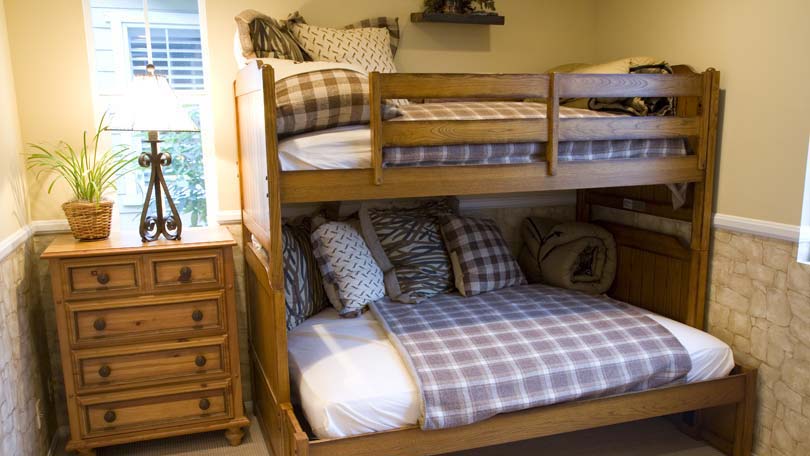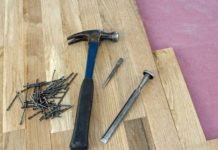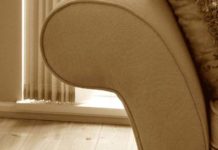
Once upon a time, back when every piece of furniture was a work of fine craftsmanship and you pulled your carriage right up to the door of the wood workers’ home to retrieve your furniture, there was no question as to the origin of the furniture you were purchasing. Now that other facets of living have taken over our lives, furniture is often an overlooked relevant facet of every day living. It can even be hard to know how to tell if furniture is made from real wood.
With the introduction of veneers, wood furniture became lighter and cheaper. It also had a tendency to flake, crack, craze, and flake away in large unsightly chunks. This reveals an ugly gaping hole of plastic or plywood that completely detracts from the furniture’s intended beauty.
Real wood furniture is crafted from solid wood, not bits of wood linings. Real wood furniture is going to be heavier, more costly, and more durable. While of course you’re not tap dancing on the antique secretary’s desk, you are likely to make furniture ownership errors along the way. You might spill something, drop something, drop the furniture, forget to wax for half a year, or simply become the victim of an unfortunate roof leak. Having strong furniture that was crafted from quality wood is much more likely to survive these mishaps than veneered wood that can’t even be guaranteed to stay together during a particularly humid summer.
When trying to determine how to tell if furniture is made from real wood it is okay to ask before buying. It is a simple question that so many of us avoid because we are afraid of looking like an uninformed consumer. We would rather take the chance of buying something that isn’t real than to risk sounding silly, offending a craftsman, or appearing unappreciative. Just like anything else, a representative of fine furniture would rather have you ask than be unsure. Let’s not forget that it is your hard earned money that you are slapping down. You have the right to ask any question you want. And you have the right to be answered with respect even if you ask if they have it in purple. And if you ask this question often enough, you may be surprised at the answer. After all, there are some really high quality veneer jobs out there that can be almost undetectable.
Asking only works when you’re buying a piece of furniture. What about the piece of furniture you’re about to list on EBay or the one you’re great grandmother left you? Weight is a key indicator, unless it’s a soft light wood like pine. Flaking or lifting corners are an indication that the piece is a veneer. You want to make sure that when you list something for sale that you are representing the truth, so you might want to check more than just the basics.
Veneered furniture tends to be covered all over, including the bottom pieces that aren’t seen under normal circumstances. Real wood furniture has stud pieces in these areas. Stud pieces are real pieces of unfinished wood that are part of the piece’s structure. It can be harder to find the stud pieces on some furnishings than others. A table, for instance, is likely to have stud pieces on the underside, which you can see simply by crouching down to take a peek. A dresser is a little harder to just peek under. However, if you remove a drawer, you can probably find a stud piece by using a flashlight and peering into the back of the piece. While this is not a steadfast rule, it is helpful when attempting to discern whether or not a piece of furniture is made from real wood.
Laminate pieces are the easiest to detect. Laminate is different from veneer. Veneer is like a sheet of real wood placed over plywood or plastic. Laminate is made from foils or paper and is created by a machine that is able to doll out a convincing design. However, laminate lacks any type of original detail, like grain.
Grain is one of the number one determining factors when distinguishing between solid wood furniture and other types of wood furniture. When grain can be touched, there is no doubt. Grain can be felt by the fingertips, often traced along the ridge of the grain as it juts above the rest of the wood just a fraction of a centimeter sometimes. Grain is almost barely discernable when the furniture has been sealed to prevent drying out or crazing. It also smoothes out the surface. It may take a strong magnifying glass to determine whether or not the grain of the wood is real or not. Furniture with obviously carved details is solid wood. You can not carve veneers or laminates.
Understanding how to tell if furniture is made from real wood requires a combination of all the above information. Since real wood pieces are unique, it might need to meet several criteria for you to be sure. Of course, there is always the option of taking a piece of sandpaper to the furniture!





